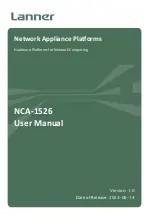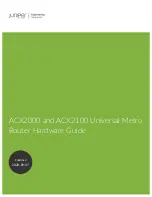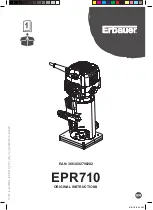
Appendix
A.6 Equipotential bonding
SCALANCE X-300
318
Operating Instructions, 05/2016, A5E01113043-20
A.6
Equipotential bonding
When do potential differences occur?
Potential differences can, for example, be caused by different power supplies. Potential
differences between separate parts of the plant can be damaging to the system in the
following situations:
●
Programmable controllers and peripheral devices are linked on grounded connections
●
Cable shields are contacted at both ends and grounded to different parts of the plant.
How do you avoid potential differences?
Potential differences must be reduced by installing bonding conductors so that the functions
of the electronic components used are guaranteed.
When and why is equipotential bonding necessary?
Several good reasons for equipotential bonding are listed below:
●
Devices with a grounded interface can be damaged by potential differences.
●
The shield of the PROFIBUS cable must not be used for equipotential bonding. This is,
however, the case if parts of the system connected by the cable shield are connected to
different grounding points.
●
Equipotential bonding is a requirement for lightning protection.
Rule for equipotential bonding
Remember the following points about equipotential bonding systems:
●
The lower the impedance of the equipotential bonding cable, the greater the effectiveness
of the equipotential bonding.
●
The impedance of the additional bonding conductor must not exceed 10% of the shield
impedance of the bus cable.
●
Make largearea contact between the bonding conductor and the PE conductor.
●
Protect the bonding conductor from corrosion.
●
Install the bonding conductor so that the area enclosed by the bonding conductor and
signal cables is as small as possible.
●
Use copper or galvanized steel for the bonding conductor
●
Include metal, conductive cable channels/racks in the equipotential bonding of the
building and between the individual parts of the system. The individual segments of the
channels/racks must be connected together with low inductance and low resistance and
connected to the building ground system as often as possible. Expansion joints and
angled connections should be bridged by additional flexible grounding bands.
Содержание SCALANCE X302-7EEC
Страница 14: ...Table of contents SCALANCE X 300 14 Operating Instructions 05 2016 A5E01113043 20 ...
Страница 38: ...Introduction 2 2 Product overview SCALANCE X 300 38 Operating Instructions 05 2016 A5E01113043 20 ...
Страница 320: ...Appendix A 6 Equipotential bonding SCALANCE X 300 320 Operating Instructions 05 2016 A5E01113043 20 ...





































